How can we engage viewers during co-watching, and…is this necessary?
What ways do platforms choose to engage viewers and to keep their loyalty?
How to increase viewer engagement on VOD platforms while watching TV series and films? Or do films and TV shows provide enough entertainment, especially when viewers aren’t watching alone?
We've analysed how VOD services and their partners launch watch parties and other entertaining events to determine if the ‘movie plus communication’ mix is compelling or if viewers require more.
Guests, Hosts and Influencers
Guest appearances are the most popular and obvious idea for attracting and entertaining an audience while they are watching movies and TV shows. Almost all group co-viewing solutions assume that the chat room stream has a host who invites participants, manages the viewing process, comments on it, and can generally perform any function within this field, from thanking sponsors to critical comments on what is happening.
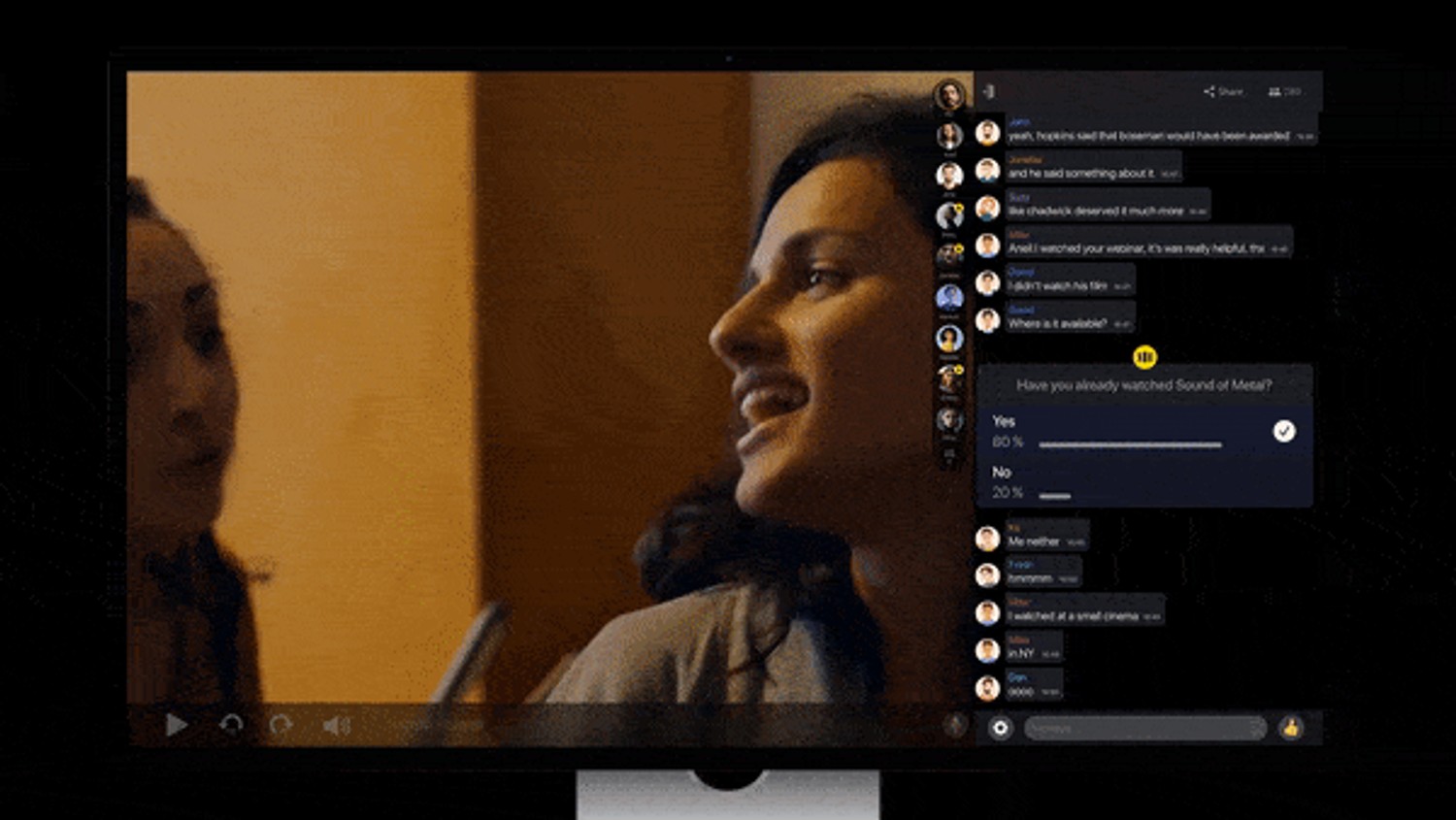
Of course, watching the content with a host or guests originates in TV shows, where experts come on to programs, present films before they start, and discuss them after they finish.
Live premieres and screenings in offline cinemas and festivals operate similarly. For example, directors, actors or any other member of the film crew can present the film, and then discuss it with the audience afterwards, answering their questions.
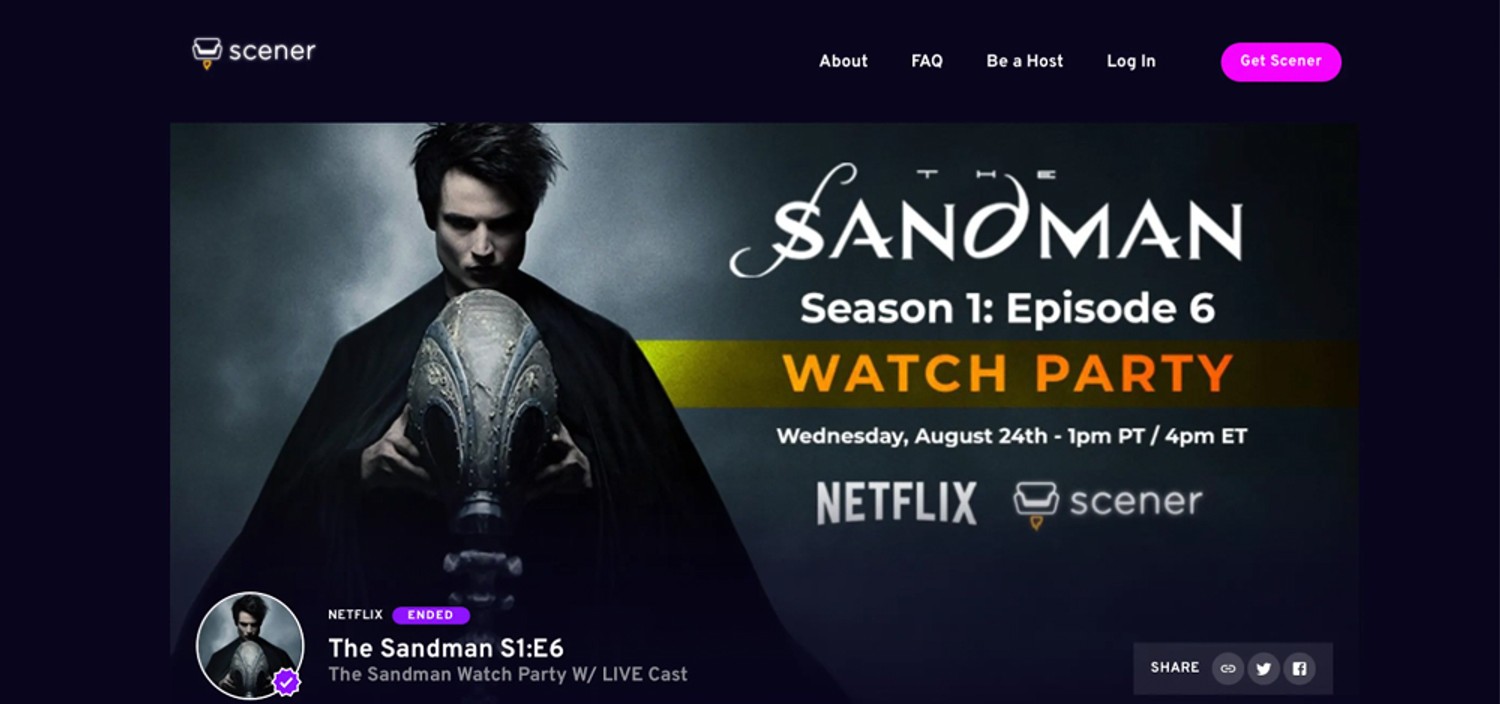
However, the digital watching format offers new opportunities for presentations with guests. For example, a film can be discussed in real time, especially if it is not a premiere, thus turning viewing video content into an open podcast. It offers many options, resulting in a kind of vlog, YouTube analysis mix, or Twitch stream, in addition to some of the more classic genre formats mentioned above.
This is the path that Netflix, for example, is following. From time to time, in partnership with the Scener browser extension, the streaming service arranges premieres of major releases. Thus, in August, the release of the “Sandman” series went like this: anyone could join in co-viewing, and members of the film crew, as well as Neil Gaiman himself, acted as hosts.
Social networks are the main competitors for VoD services. What are they doing? Watching the feeds collected for them, following UG content, communicating and following influencers.
According to a Deloitte report, influencers are what is most important to users all around the global: about 80% of users follow at least one influencer. This means that if an influencer joins a platform, a part of his audience will most likely follow him.
HBO Max also held its own premieres with the help of a browser extension. Zack Snyder was one of the brightest hosts of their online Q&A events, and he connected to his “Justice League” premiere.
Additional Content
When are viewers distracted from watching? It’s when they fail to follow a story and lose context. But even this is easy to avoid. People have gotten used to browsing social networks in parallel with their primary activity, even when no need exists. To maintain engagement and make usage of the OTT platform more conscious, capturing the moment when a viewer craves distraction and preventing them from turning to a social network for entertainment or to a browser for more information is essential.
Amazon Prime has pioneered this route. They tested X-ray functionality on Kindle books (sending users more information about the books while they were reading) and decided to examine films and TV series more closely.
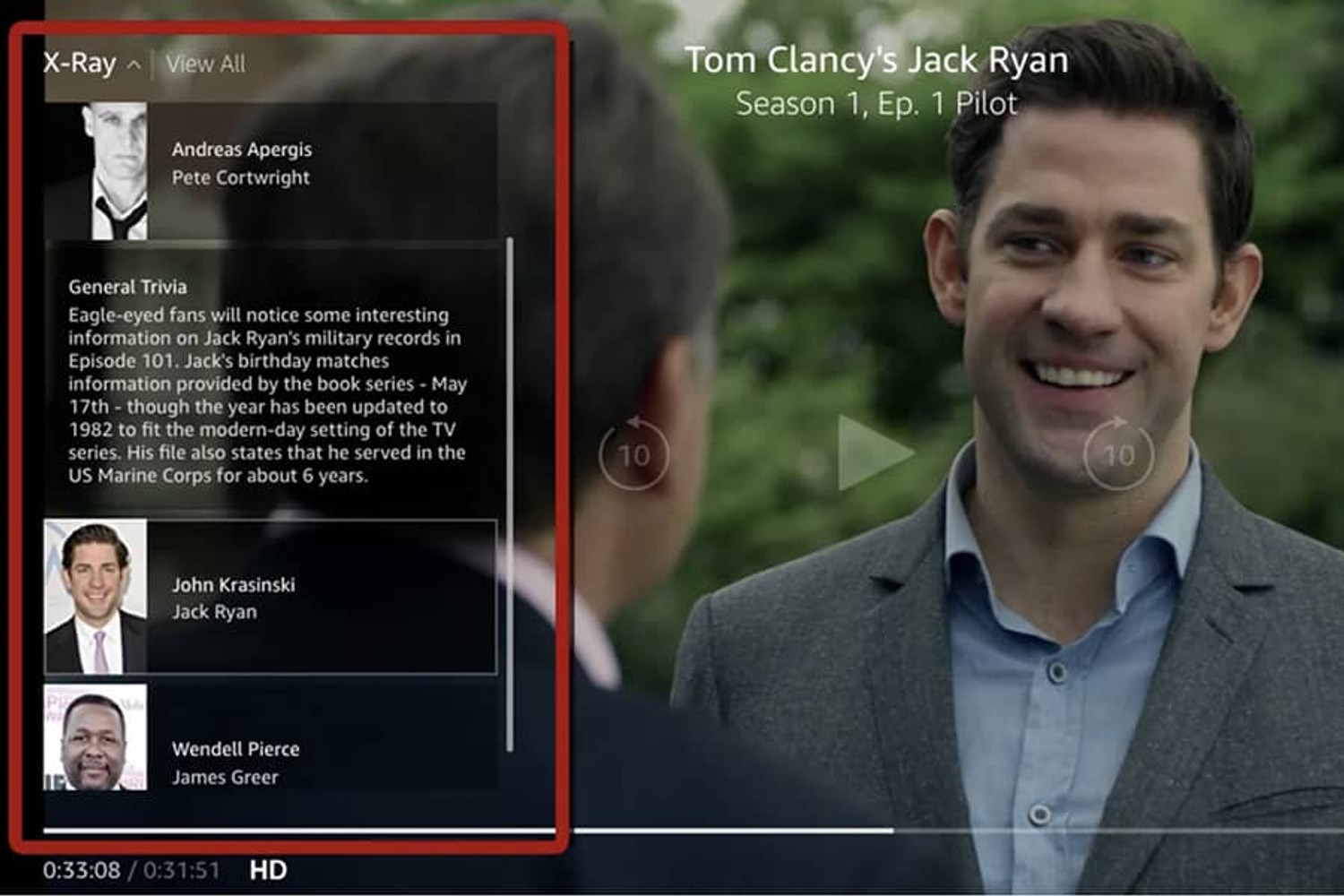
So, for many Prime Video titles, additional content has been created, tied to certain moments within a film or series. The viewer accesses this content by pressing the player’s pause button during playback. This extra content often includes all the information on the title’s IMDb page (Amazon also owns this movie database).
This was a bright, innovative solution suitable for movie lovers, though it was implemented in a rather dull and mundane fashion, and the extra content is too predictable. If you are a cinephile, you're likely already familiar with the wealth of information available on IMDb. If you are a serious movie lover or preparing for a premiere, you've probably already searched for all the details on IMDb. But this innovative idea, which began to be implemented back in 2012 and gradually spread to different devices, is still alive and active, meaning that there are still plenty of X-Ray fans.
In addition to keeping users “on platform,” X-Ray helps Amazon create native cross-platform promotions. For example, it sends viewers to Amazon Music for music from a film, to Kindle for books, and to the Amazon marketplace to purchase goods related to the title.
However, whereas the content sent by X-Ray is relatively dry, emotionless, and purely informative, the content Cosmopolitan sent to viewers in its joint project with Google was, on the contrary, seemingly too emotional and editorial. In 2019, Cosmopolitan decided to support the release of the second season of the “You” series, which was very popular among the site’s readers. Together with Google News Lab, they created an in-app page (which can also be accessed via a link in a browser), which was supposed to operate as a second screen on a laptop or TV where the viewer was watching the show. Viewers simultaneously tuned into Netflix and the additional content page, which was followed by messages from Cosmo displayed on a dedicated screen at specific points in the series.
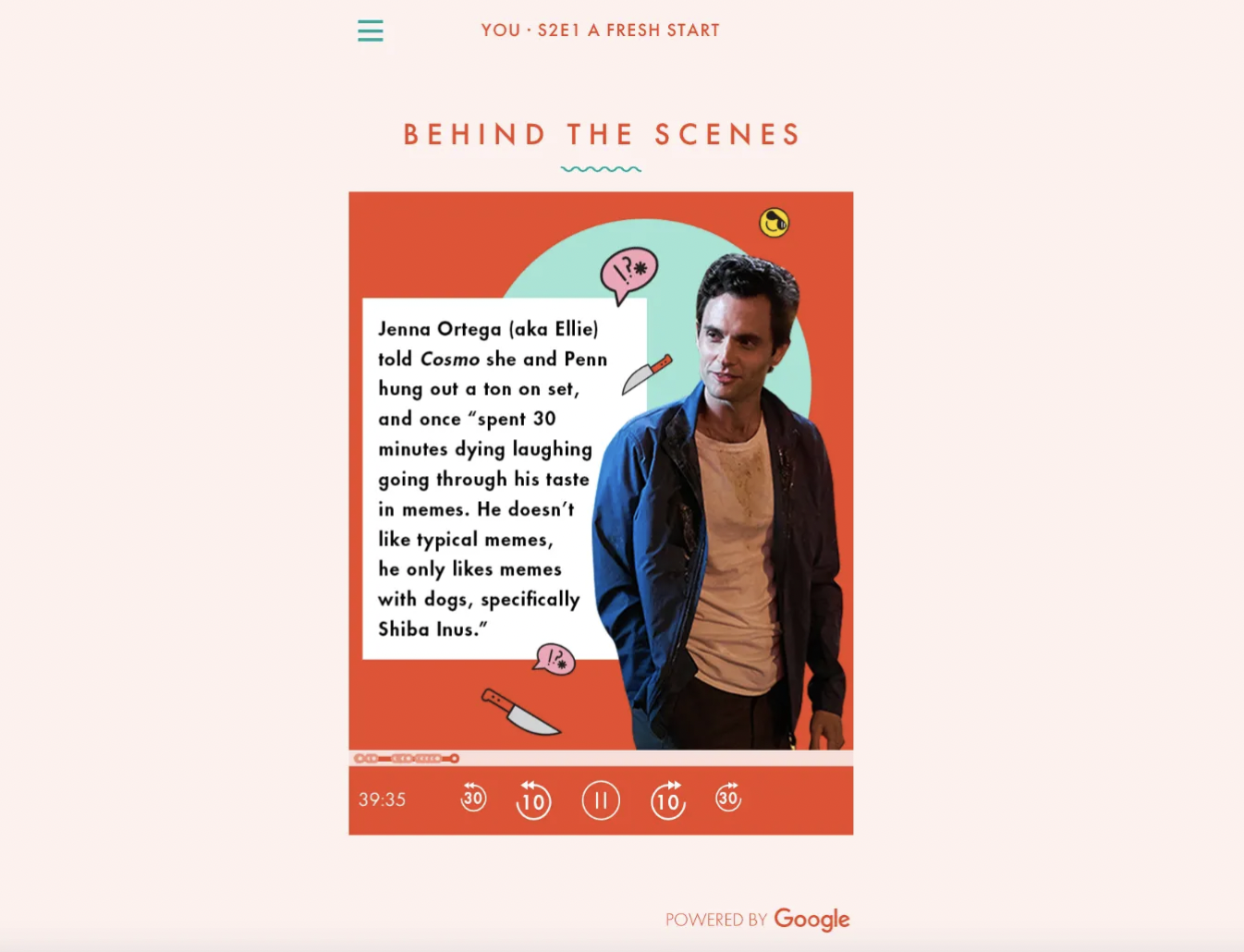
While Google News Lab data lead Simon Rogers called the experiment a success, not everyone agreed. There was too much content from Cosmo during the browsing process, and this information was often delivered as friendly comments. While this might work with familiar films/series, it provided a distraction as users tried to acquaint themselves with the premiere. In addition, funny gifs flashed between the messages on the second screen, distracting viewers from immersion.
Last year, after learning from competitors’ and partners’ mistakes, Netflix announced its plan to launch the N-Plus service. This will enable viewers to do many things right within the platform, including creating playlists of any tracks that appear in originals, receiving photos and videos from filming, getting additional content information ‘here and now’ so that they do not have to Google it, and so on.
Animated Reactions
Almost all services that allow viewers to watch content together allow users to send animated emojis: in some cases, they fly into the chat, and in some, they even appear on the TV screen. Users love this interactive format: it’s an easy and quick way to share an experience without formulating a comment or being distracted from viewing for a longer time.
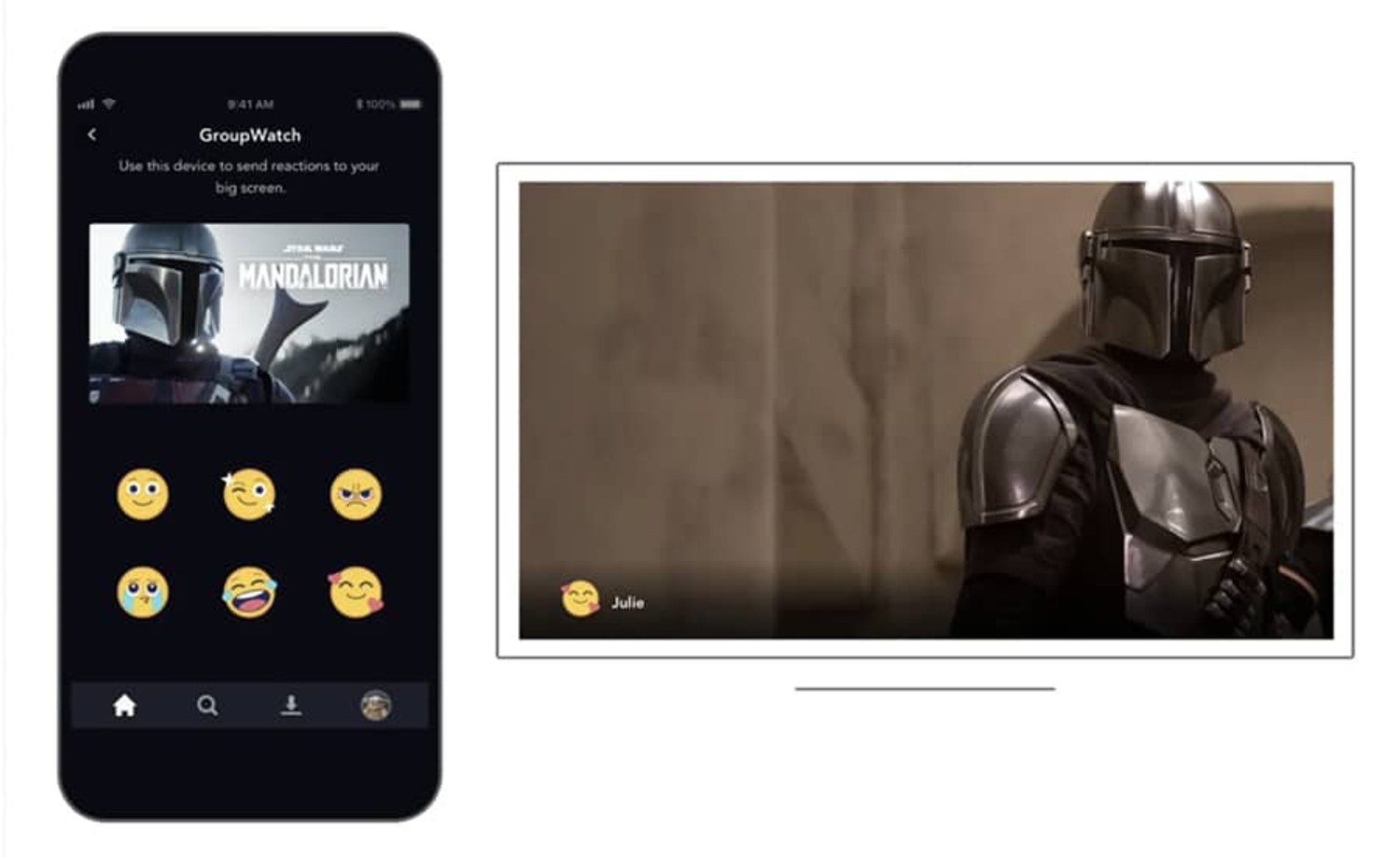
The attractiveness of animated emojis was used completely unexpectedly by Disney Plus for group viewing. There, users can only send emojis during co-viewing, as neither text nor voice chat is available. However, users have many concerns about this format for interaction, the most obvious being how they explain what they are happy or unhappy about. Because of this, they still have to go to instant messengers, so why not send emojis in the messengers, themselves?
Surveys and quizzes
Most services that allow content co-watching use practically no polls or quizzes, or do this in association with sports content. But why? Viewers support their favourite heroes in the same way while watching TV series, as they do their favourite teams while watching sports, and they also like to share their opinions and search for other like-minded viewers. That’s why we at Watchers see the potential of engaging tools for any content, whether award broadcasts, reality shows, film premieres, or familiar classics.
What might users ask each other during an old movie? Just about anything! Learn who other viewers see as their favourite character, share a story or a fact, or put something on to play. In addition, engagement tools make it possible to enable the same cross-promotion and native marketing that Amazon does within its own limited ecosystem. Widgets in the co-browsing chat allow users to buy clothes worn by a film character on demand, order an interior similar to the one in that apartment being shown, or fly to Italy to walk around the filming locations.
Thus, although engagement tools primarily perform their primary function, involving and increasing ER, they can also be the solution to many additional tasks that a content platform has set for itself.
***
If you are looking for a way to increase engagement and provide additional content on your website or app, please fill out the form below. We will be happy to help you find the most suitable solution.
Boost your platform with
Watchers embedded tools for ultimate engagement
